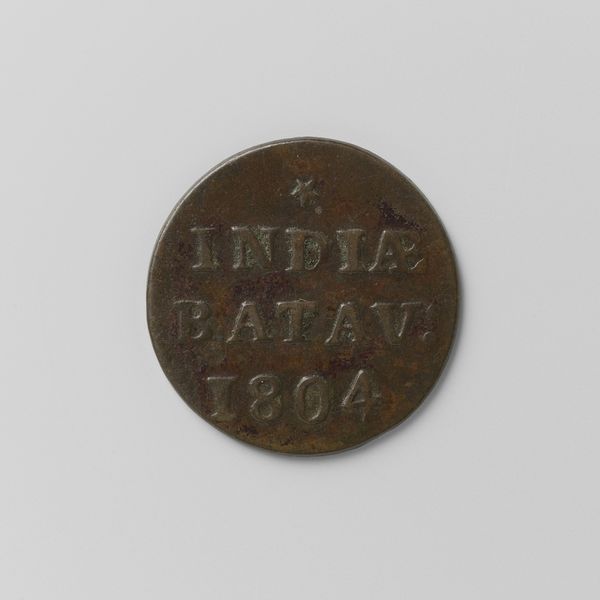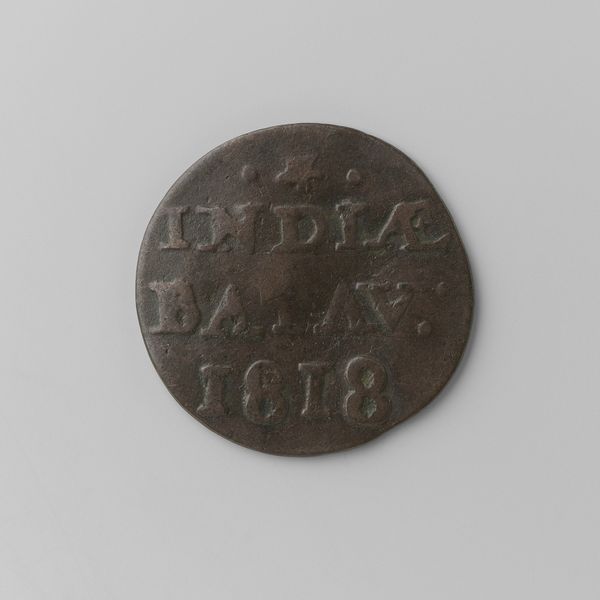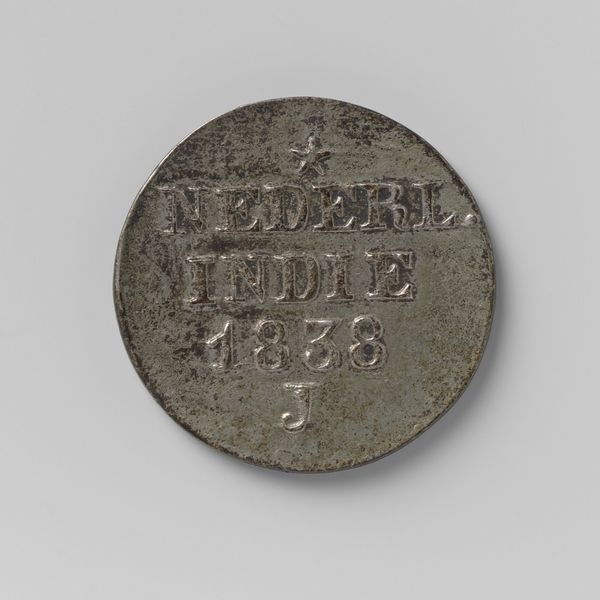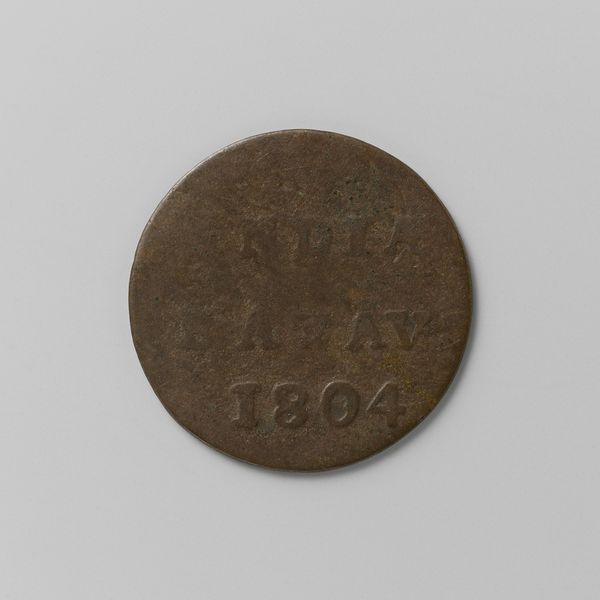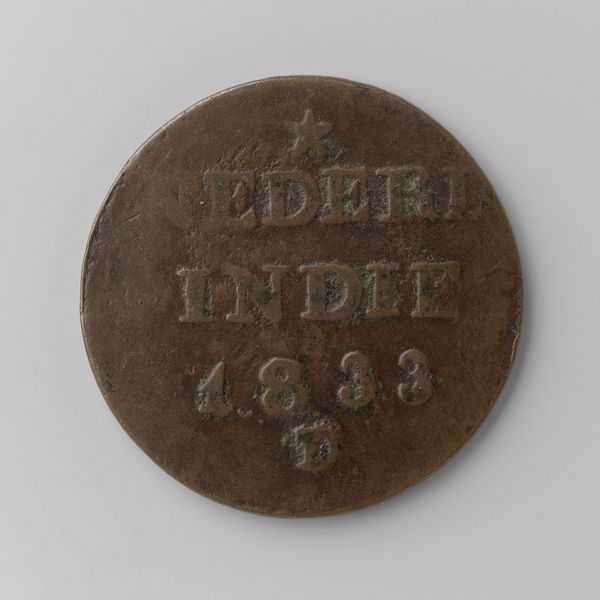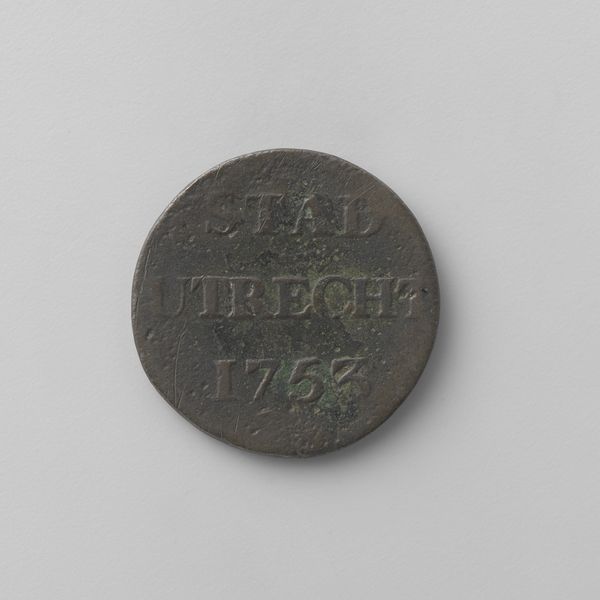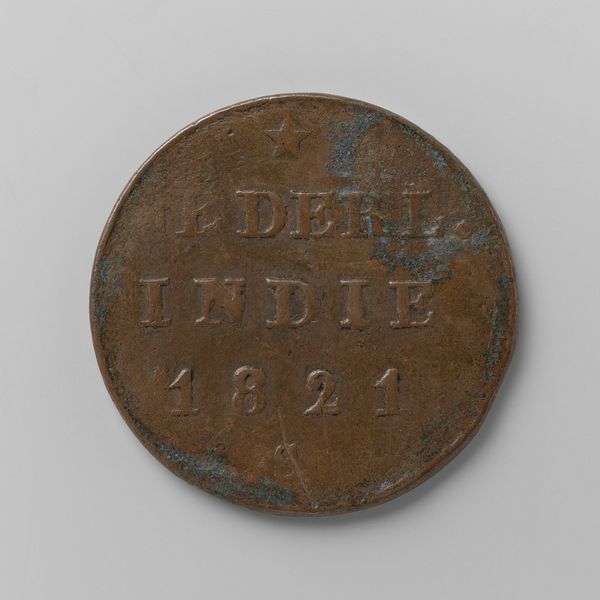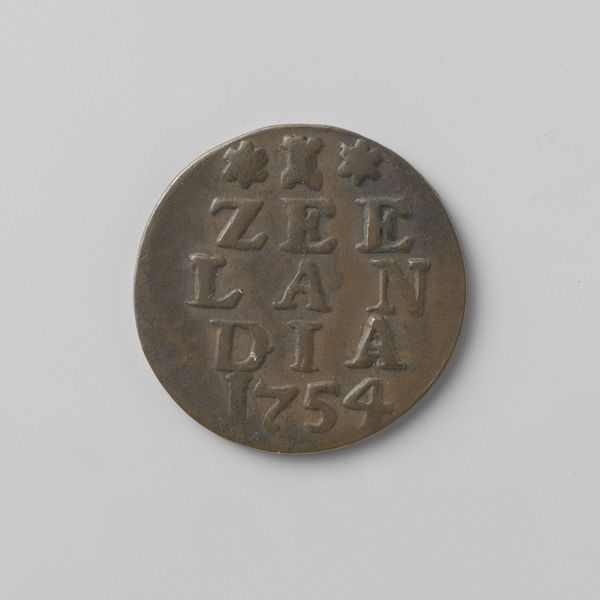
Zilveren afslag van een duit voor Nederlands Indië uit Holland,1802 1802
0:00
0:00
print, metal, engraving
# print
#
metal
#
geometric
#
ancient-mediterranean
#
decorative-art
#
engraving
Dimensions: diameter 2.2 cm, weight 2.67 gr
Copyright: Rijks Museum: Open Domain
Curator: Here we have a fascinating silver striking of a duit, a coin intended for use in the Dutch East Indies, dated 1802. Editor: It feels weighty, doesn’t it? So small, yet carrying a dense history. Looking at the surface, it has an aged patina, which gives it an ethereal quality, a ghostly feel. Curator: Indeed. What we're seeing here is a product of the Batavian Republic, a client state of Napoleonic France. The inscription “Indie Batav:” clearly marks it as currency for the Dutch East Indies, modern day Indonesia, then under Dutch colonial rule. Editor: The simplicity of the design is striking – a star, the inscription "Indie Batav:" and the date 1802. But this simplicity belies a brutal, exploitative system. We need to remember that this coin represents Dutch economic and political power in a landscape of forced labor and resource extraction. What narratives are silenced by this object? Curator: Precisely. It's a complex interplay of power dynamics represented in a small object. The duit itself, though a low-value coin, was crucial in facilitating trade and, by extension, control. Its design elements, like the star, were intended to project authority. Editor: A symbol that papers over deep wounds, I think. When you see that inscription “Indie Batav:”, one is reminded of how colonialism fundamentally reshaped identities and landscapes. Currency served as an everyday reminder of the colonizer's presence. Curator: Absolutely. It also reflects the global reach of European power at the turn of the 19th century. This coin wasn't just about local transactions; it was a node in a vast network of global trade and colonial administration. Editor: Looking at the condition of the metal, it seems worn in certain areas. You almost imagine who may have held it, you know? Curator: It sparks the imagination, certainly. These objects allow us to consider those human connections that underpin global markets and colonialism. Editor: Considering the coin's history alongside present-day conversations about the legacy of colonialism brings, I think, this humble-looking duit to life. Curator: It certainly is much more than just an artifact; it represents the complicated entanglement of historical forces and the human cost.
Comments
No comments
Be the first to comment and join the conversation on the ultimate creative platform.
